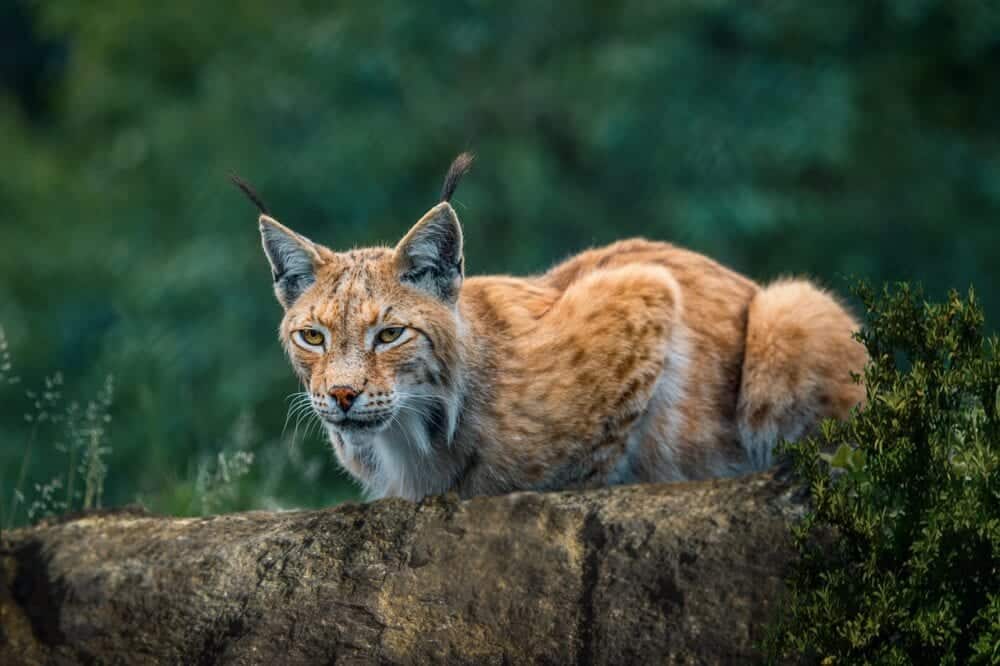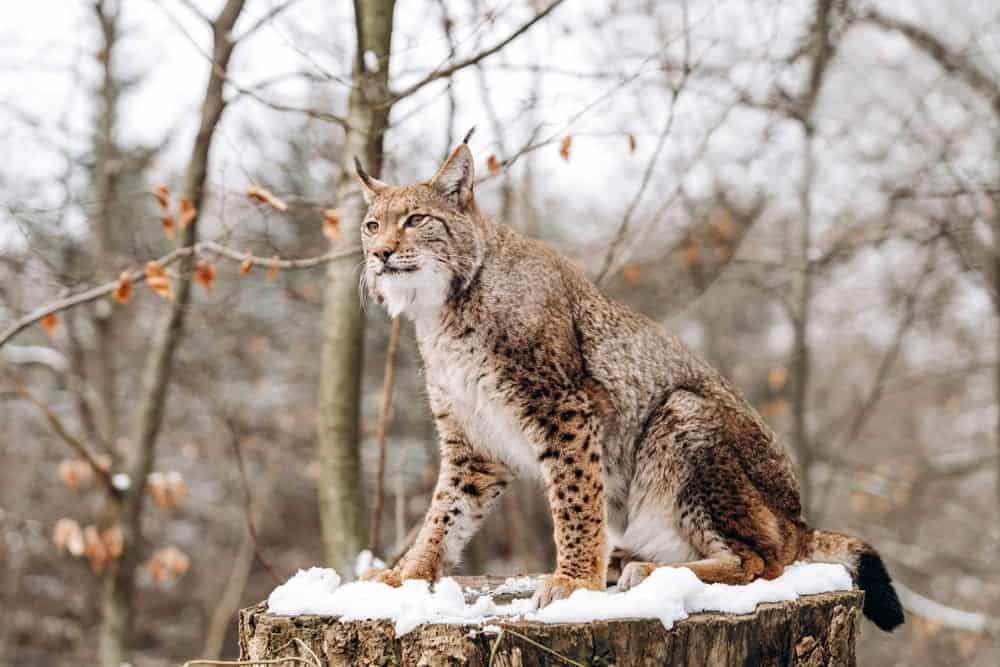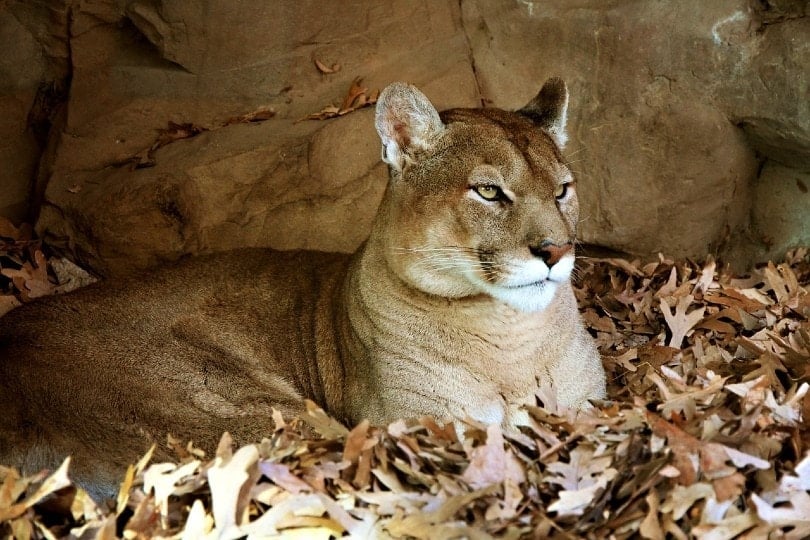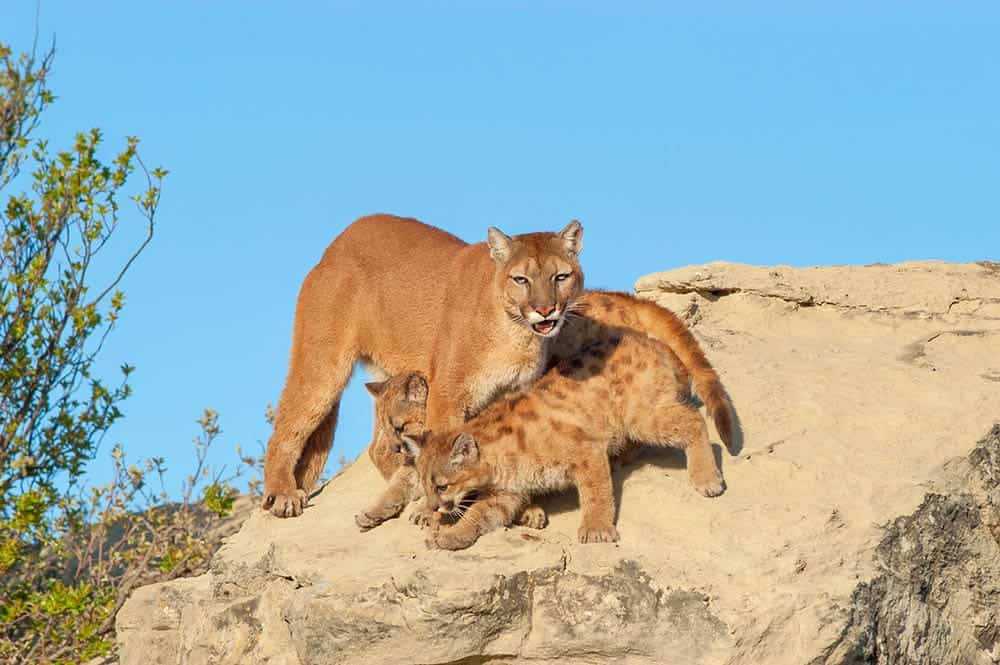Known for its wide open spaces, diverse wildlife, and abundance of natural mineral resources, the state of Montana is one amazing place that’s also called the “Treasure State.” This western state is home to a great many animal species, including some wild cats1.
In this article, we’ll tell what wild cats live in Montana and include some useful tips to help you stay safe from these animals when spending time in nature.

The 3 Types of Wild Cats in Montana
1. Bobcat

| Materials: | Lynx rufus |
| Tools: | 28”–37” |
| Difficulty Level: | 15–20 pound |
The bobcat is Montana’s smallest wild cat that’s approximately twice as large as a domestic cat. The bobcat has a stubby bobbed tail, short dense fur, and light gray, brown, yellowish-brown, or buff base coloration. The fur is white under the body and legs although it’s often speckled with color. The facial fur of this cat is usually streaked with black, giving it a striking appearance.
In Montana, bobcats can be found statewide in places of dense vegetation and high prey densities. These cats can be active during the daytime hours but they’re primarily nocturnal animals. They’re also very elusive so spotting one in nature isn’t usual.
2. Canada lynx

| Materials: | Lynx canadensis |
| Tools: | 1.7’–3.9’ |
| Difficulty Level: | 16–31 pounds |
At first glance, one might mistake a Canada lynx with a bobcat because there are some similarities like tufted ears and small tails. However, the Canada lynx is a medium-sized cat that’s bigger than a bobcat with longer legs. A Canada lynx has dense, silvery grayish brown fur covering its relatively short, compact body.
The Canada lynx is a threatened species, with only a small population remaining in just three states, including Montana. This solitary, secretive animal is usually active during the nighttime hours and seldom ventures into large open areas.
Canada lynx are found in the western part of Montana in deep forests where there’s plenty of prey. Consider yourself fortunate if you spot a Canada lynx in the wild, as it’s a rare occurrence.
3. Mountain lion

| Materials: | Puma concolor |
| Tools: | 23”–28” |
| Difficulty Level: | 130–150 pound |
The mountain lion is a big cat with a lot of different names including cougar, puma, and panther. The body of a mountain lion is covered in beige-brown fur except for the belly and chest which is gray. There are black markings on this cat’s tail tip, ears, and around the snout. Mountain lions vary greatly in size, depending on where they’re found. A male can tip the scales at well over 150 pounds while female mountain lions weigh around 85 pounds.
In Montana, mountain lions can be found statewide in any habitat with sufficient food, cover, and room to avoid coming into contact with people. This is an elusive, highly predatory cat that preys on many things like white-tailed deer, snowshoe hare, elk, and moose. Human encounters with these big cats are rare although they are occasionally spotted from afar.

How to Stay Safe Around Montana’s Wild Cats
Now that you’ve read through the information above, you know that the wild cats in Montana are all elusive creatures that steer clear of humans. However, we humans do venture outside our urban jungles to mingle with Montana’s nature where it’s possible to have a run-in with a wild cat. The first thing to do if you come close to a wild cat is to remain calm and stay alert. Never approach the animal or corner it in any way. Instead, face the animal, make some noise, and try to make yourself look larger by waving your arms or pulling your coat up over your head.
Regardless of if you encounter a bobcat, Canada lynx, or mountain lion, it will most likely retreat, as human attacks are rare.

Conclusion
It’s no wonder that three wild cats choose to make their homes in the state of Montana, considering the state’s vast space, forested hills, and ample prey. While it’s not likely you’ll have a face-to-face encounter with one of these cats in the wild, you can consider yourself lucky if you catch just a glimpse of one from afar.
Humans need to remember to respect the natural habitat of Montana’s wild cats. The last thing anyone should do is try to get close to one. Even if they look adorably cute, bobcats, Canada lynxes, and mountain lions are wild animals that can attack.
See Also:
Featured Image Credit: outdoorsman, Shutterstock
